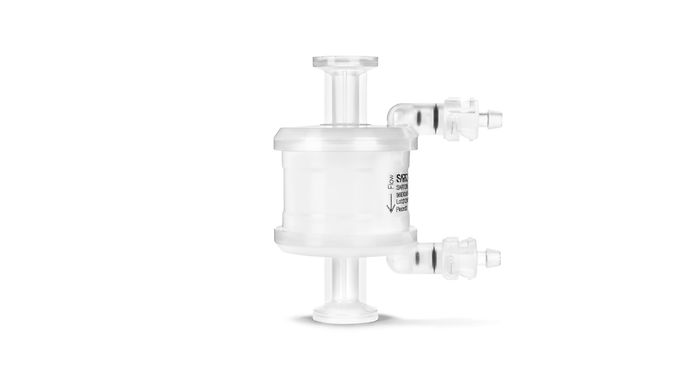
Sartobind STIC® PA Chromatography Membranes
Sartobind STIC® PA removes contaminants in high-salt conditions. Salt-tolerant interaction chromatography (STIC) with a PA ligand is based on the principles of anion exchange (AEX) chromatography. AEX is a well-established method for removing process-related contaminants such as host cell proteins (HCP), DNA, endotoxins, and random or endogenous viruses. It is performed during the downstream processing of monoclonal antibodies (mAbs) in a flow-through mode. The process is flow-driven, not mass-driven, and therefore membrane chromatography (MC) has an advantage over columns for contaminant removal because membranes have up to two orders of magnitude higher flow rates. The membranes are easy to handle and can be disposed of after one use, just like filters, saving on validation costs.
Applications:
Current downstream mAb processes consist of at least one initial capture and one AEX chromatography step. A limitation of the AEX step is often that Q chemistry requires low salt conditions. In processes with cation exchange (CEX) as the second chromatography step, the CEX pool must be diluted to a conductivity of 4-7 mS/cm to restore binding conditions for the subsequent AEX step. The Sartobind STIC® PA membrane consists of cross-linked, regenerated macroporous cellulose. The primary amine ligand is bound to the matrix at approximately six times the ligand density of a Q membrane. Both the free amine and the high ligand density were crucial in developing its high salt tolerance.
Advantages:
Sartobind STIC® adsorber accelerates the production process with high flow rates and opens new possibilities for purifying therapeutic proteins and vaccines.
- No need for CEX pool dilution.
- Host cell proteins up to 10 kg/L (product load/L of membrane).
- Viruses > 4 log.
- DNA up to 1.5 M NaCl.
- Endotoxins > 4 log.
Ease of Use:
- Plug & play devices from 0.08 mL to 1.6 L.
- Can be used as a filter.
- Flow rate up to 30 bed volumes/min.
- Single-use after one use.

